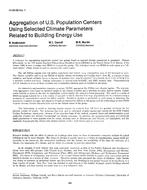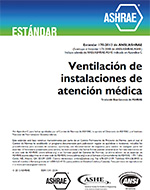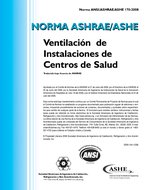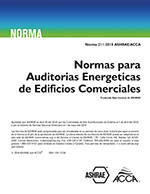Description
A technique for aggregating population centers into groups based on selected climate parameters is presented. Climate information on the 125 largest Standard Metropolitan Statistical Areas (SMSAs) in the United States (U.S. Bureau of the Census 1980) is used to assign each SMSA to a particular group. The technique selects one SMSA in each region as a “climate center,” whose climate is used to represent the entire region.
The 125 SMSAs contain over 140 million population and include every metropolitan area of 250 thousand or more. The climate variables used to group SMSAs of similar climate are heating and cooling degree days, ¯KG, a measure of solar radiation, and latent enthalpy hours, a measure of moisture that must be removed from outside air in order to bring it to a standard comfort condition. Climate information is derived from SOLMET and TMY weather data, Characterization of U.S. climates in terms of these variables and relationships between pairs of variables is discussed.
An interactive agglomeration computer program, GLOM, aggregates the SMSAs into climate regions. The user provides aggregation rules based on specified ranges of the climate variables and a selection of initial climate centers. Considerable latitude is given to the user to manipulate and/or modify the computer-based groupings. The result is a series of SMSA groupings suitable for a wide variety of analyses in which climates with large populations can be evaluated using a minimum of representative centers for direct analysis. Statistical analysis is performed on each group to determine the population-weighted averages and ranges of climate parameters for SNISAs in the group and the relationship of each SMSA to group average climate characteristics and to the climate center of the group.
This information is useful in choosing climate centers for research that will have the greatest relevance for the greatest number of people. The technique has been used to determine climate regions and centers for the DOE Passive Cooling Technology Assessment. Because of the objective basis of the method, personal biases and misinformation about particular climates and climate “reputations” are largely overcome, In addition, the unrepresentativeness and relatively small populations of some popular sites for energy analysis, such as Albuquerque and Phoenix, are highlighted, and the similarity of geographically distant sites (Boston-Seattle or New York-Cincinnati) are discovered.
Units: Dual
Citation: Symposium, ASHRAE Transactions, 1985, vol. 91, pt. 2B, Honolulu, HI
Product Details
- Published:
- 1985
- Number of Pages:
- 23
- File Size:
- 1 file , 2.3 MB
- Product Code(s):
- D-HI-85-05-1




